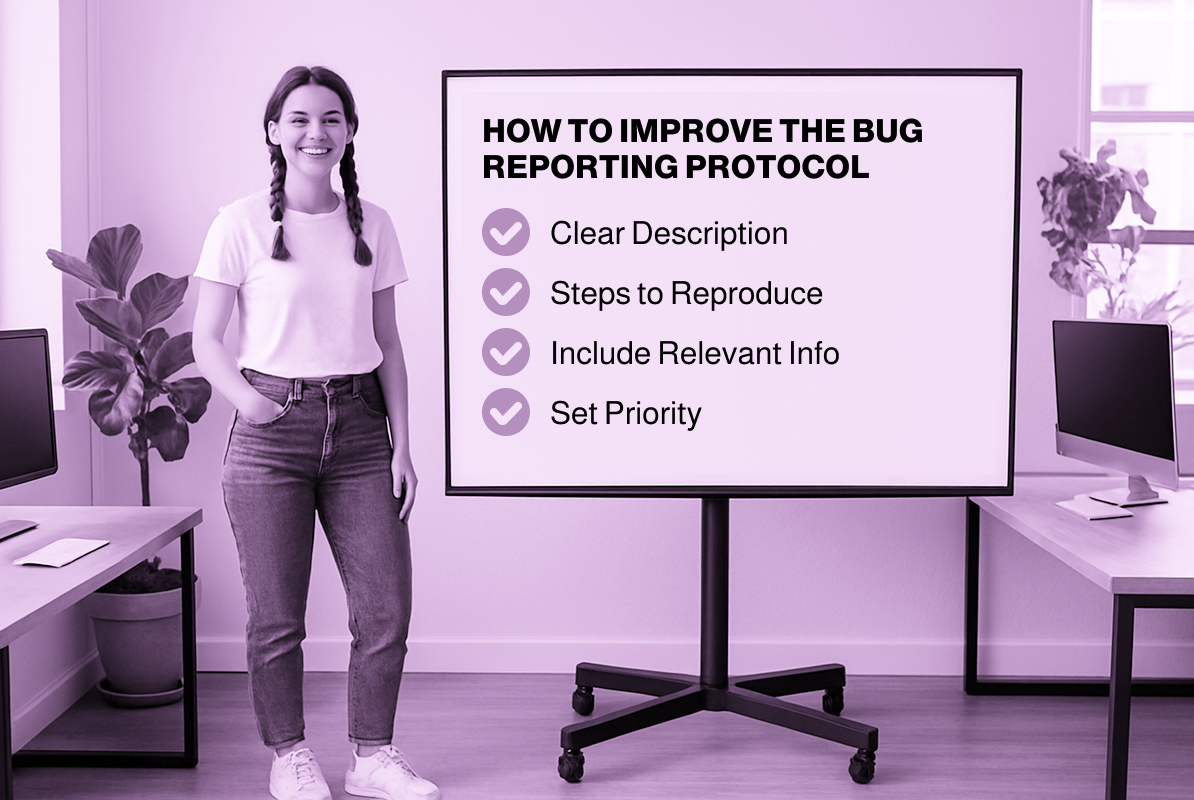Bug Reporting Flow Optimization
Bug Reporting Flow Optimization
Leading a cross-functional initiative to streamline bug reporting, reduce overhead, and improve prioritization
The bug reporting process of the company was causing delays, confusion, and frustration across teams. As the Product Manager, I identified a fragmented and unclear system that led to duplicated efforts, vague reports, and no consistent prioritization. I led a complete overhaul of our workflow—building alignment across teams, introducing automation, and ensuring every bug had a clear owner and path forward.
Process Optimization • Bug Reports • Project Management • Operations
My Role: Led the redesign of the bug reporting process from the ground up
The Problem
The bug reporting workflow suffered from three core issues:
Lack of prioritization: Bugs were reported without consistent severity levels, making it difficult to triage and allocate resources efficiently.
No structured or integrated reporting system: Reports came in through multiple channels and lacked key information. There was no direct integration with our ticketing system (Linear), leading to manual work and dropped issues.
Unclear ownership: Once a bug was reported, it was often unclear who was responsible for follow-up, resolution, or communication.
This resulted in wasted time, duplicate work, and bugs sitting unresolved for weeks without clear next steps.
The Process
Working cross-functionally, I gathered input from:
Developers (frontend and backend) – who needed clearer, actionable reports
Support and QA – who were often the first to hear about bugs
Other internal teams – who occasionally reported bugs but lacked guidance
External reporters – whose input needed to be structured and centralized
I implemented the following changes:
Standardized Priority Definitions – Introduced a clear severity framework (e.g. blocker, critical, minor) to help triage effectively
Created a Bug Reporting Portal – A web guide designed for non-technical or non-product team members to help them report issues
Slack-to-Linear Integration – Set up a bug form in Slack that automatically populated Linear tickets, with separate flows for regular and critical bugs
Labeling & Triage Rules – Defined clear guidelines for labeling bugs (e.g. backend + web + bug) and next steps after submission
Clarified Ownership – Each bug was automatically assigned to the right team, with clear escalation rules
Introduced Weekly Bug Review Meetings – A recurring triage session where we reviewed and reprioritized open issues
Outcomes & Impact
The impact of the new workflow was immediate and measurable:
Faster response times – Bugs were triaged and assigned more quickly, reducing lead time to resolution
Less back-and-forth – Clear forms and defined rules meant fewer clarification requests and less manual coordination
Reduced overhead – Automation and standardization freed up developer time and removed bottlenecks
Better prioritization – Critical issues were surfaced faster, while low-priority bugs were still tracked and visible
Improved visibility and trust – Other teams felt more confident reporting issues, knowing they would be handled
Explore More Case Studies
Ready to Build Something Great?
From UX to product strategy, I help turn ideas into solutions that work. Let’s talk about what you need and how I can help.





